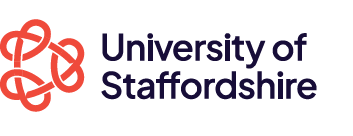Module Descriptors

DIGITAL PIPELINE 2 I
FVFX50529
Key Facts
School of Digital, Technologies and Arts
Level 5
15 credits
Hours of Study
Scheduled Learning and Teaching Activities: 48
Independent Study Hours: 112
Total Learning Hours: 160
Assessment
- Coursework weighted at 100%
Module Details
DIGITAL PIPELINE 2
On successful completion of this module, you should be able to:
1. Construct credible 3D digital models that exhibit qualities in modeling, texturing, lighting, camera work and rendering culminating in their integration within a #D composited environment. (MQF2) 2. Construct real world items into useful and appropriate parts for deconstruction as virtual models within 3d modeling and 3d sculpting tool, with specific emphasis on subsequent post production work and opportunities that offers the digital artist. (MQF6) 3. Illustrate upon 3D modeling concepts and compositing techniques using particular key examples of digital media benchmark challenges appropriate for either film or showreel p ieces to further develop the skills required blend computer modeled 3D assets, video backplated and poste production effects. (MQF6)
MQF Learning Outcome Area MQF1 - Knowledge MQF2 - Practical skills MQF3 - Social skills & responsibilities MQF4 - Values, attitudes and professionalism MQF5 - Communications, leadership and team skills MQF6 - Problem solving skills & scientific skills MQF7 - Information management and lifelong learning skills MQF8 - Managerial & entrepreneurial skills
1. Construct credible 3D digital models that exhibit qualities in modeling, texturing, lighting, camera work and rendering culminating in their integration within a #D composited environment. (MQF2) 2. Construct real world items into useful and appropriate parts for deconstruction as virtual models within 3d modeling and 3d sculpting tool, with specific emphasis on subsequent post production work and opportunities that offers the digital artist. (MQF6) 3. Illustrate upon 3D modeling concepts and compositing techniques using particular key examples of digital media benchmark challenges appropriate for either film or showreel p ieces to further develop the skills required blend computer modeled 3D assets, video backplated and poste production effects. (MQF6)
MQF Learning Outcome Area MQF1 - Knowledge MQF2 - Practical skills MQF3 - Social skills & responsibilities MQF4 - Values, attitudes and professionalism MQF5 - Communications, leadership and team skills MQF6 - Problem solving skills & scientific skills MQF7 - Information management and lifelong learning skills MQF8 - Managerial & entrepreneurial skills
MODULE LEARNING STRATEGIES
The module comprises lectures and tutorials and involves working on individual portfolio in the assignment.
MODULE INDICATIVE CONTENT
3D Computer Modelling using Maya / Photoshop / Z-Brush Computer generated models and post production techniques are often employed within film and games industries. This module will give the fundamental skills required to begin modelling, texturing and lighting artefacts, before those assets are further enhanced via 'post-production' (compositing). You will be asked to understand and apply the fundamentals of computer modelling (instructor and video based delivery) to include: Software interface, navigation, modes Modelling techniques / geometry types (Polygons, NURBS, Sub-Divs) UV Unwrapping Texturing / Shaders Cameras Lights Rendering
The re-interpretation of lab based tutorials and their effective use in realising the assignment topic will be important, as we deliberately do not cover exactly same materials as the assignment.
The re-interpretation of lab based tutorials and their effective use in realising the assignment topic will be important, as we deliberately do not cover exactly same materials as the assignment.
MODULE ADDITIONAL ASSESSMENT DETAILS
Assessment Components :
Continuous Assessment : 3D Sculpting exercise: 40%
Final Assessment : 3D Character Production 60%
TOTAL : 100
Continuous Assessment : 3D Sculpting exercise: 40%
Final Assessment : 3D Character Production 60%
TOTAL : 100
MODULE TEXTS
Essential Reading
Lewis, M. (2017). Beginner's guide to ZBrush. 3dtotal Publishing. ISBN: 9781909414501
Lewis, M. (2016). Sculpting from the imagination. Worcester, United Kingdom : 3dtotal Publishing. ISBN: 1909414336
Moss, A. (2017). Character design quarterly 03. Worcester, United Kingdom: 3dtotal Publishing. ISBN: 9781909414570
Papstein, K. and Aerni, M. (2014). ZBrush characters and creatures. Worcester: 3DTotal Publishing. ISBN: 9781909414136
Stenning, D. and Bowater, C. (2015). Beginner's guide to digital painting in Photoshop. Worcester, United Kingdom: 3dtotal Publishing. ISBN: 9781909414143
Additional Reading
Daoudi, M., Srivastava, A. and Veltkamp, R. (2013). 3D face modeling, analysis, and recognition. Singapore: Wiley.
Franson, D. (2003). 2D artwork and 3D modeling for game artists. Cincinnati, Ohio: Premier.
Lanier, L., (2006), Advanced Maya Texturing and Lighting, Wiley. ISBN: 047179404X
Ratner, P. (2003). 3-D human modeling and animation. Hoboken, N.J.: Wiley. ISBN: 0471215481
Spencer, S. (2008). ZBrush character creation. Indianapolis, Ind.: Wiley Pub.
Lewis, M. (2017). Beginner's guide to ZBrush. 3dtotal Publishing. ISBN: 9781909414501
Lewis, M. (2016). Sculpting from the imagination. Worcester, United Kingdom : 3dtotal Publishing. ISBN: 1909414336
Moss, A. (2017). Character design quarterly 03. Worcester, United Kingdom: 3dtotal Publishing. ISBN: 9781909414570
Papstein, K. and Aerni, M. (2014). ZBrush characters and creatures. Worcester: 3DTotal Publishing. ISBN: 9781909414136
Stenning, D. and Bowater, C. (2015). Beginner's guide to digital painting in Photoshop. Worcester, United Kingdom: 3dtotal Publishing. ISBN: 9781909414143
Additional Reading
Daoudi, M., Srivastava, A. and Veltkamp, R. (2013). 3D face modeling, analysis, and recognition. Singapore: Wiley.
Franson, D. (2003). 2D artwork and 3D modeling for game artists. Cincinnati, Ohio: Premier.
Lanier, L., (2006), Advanced Maya Texturing and Lighting, Wiley. ISBN: 047179404X
Ratner, P. (2003). 3-D human modeling and animation. Hoboken, N.J.: Wiley. ISBN: 0471215481
Spencer, S. (2008). ZBrush character creation. Indianapolis, Ind.: Wiley Pub.